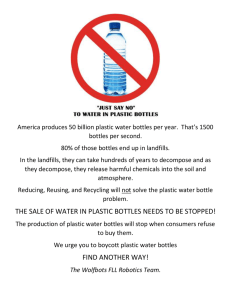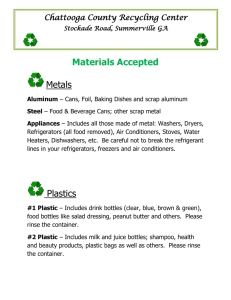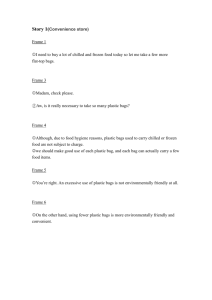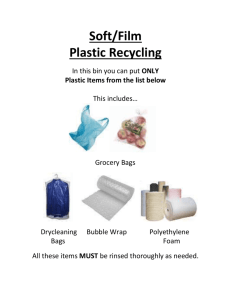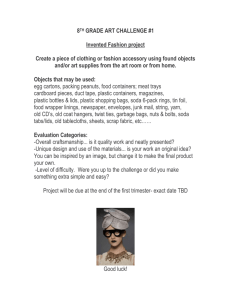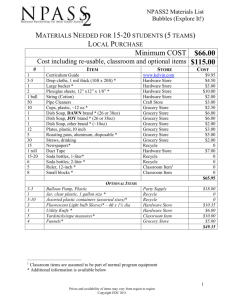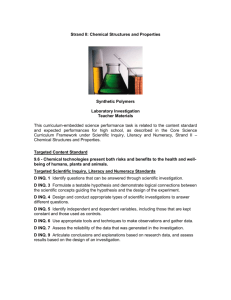The Great Biodegradable Burial - science-b
advertisement
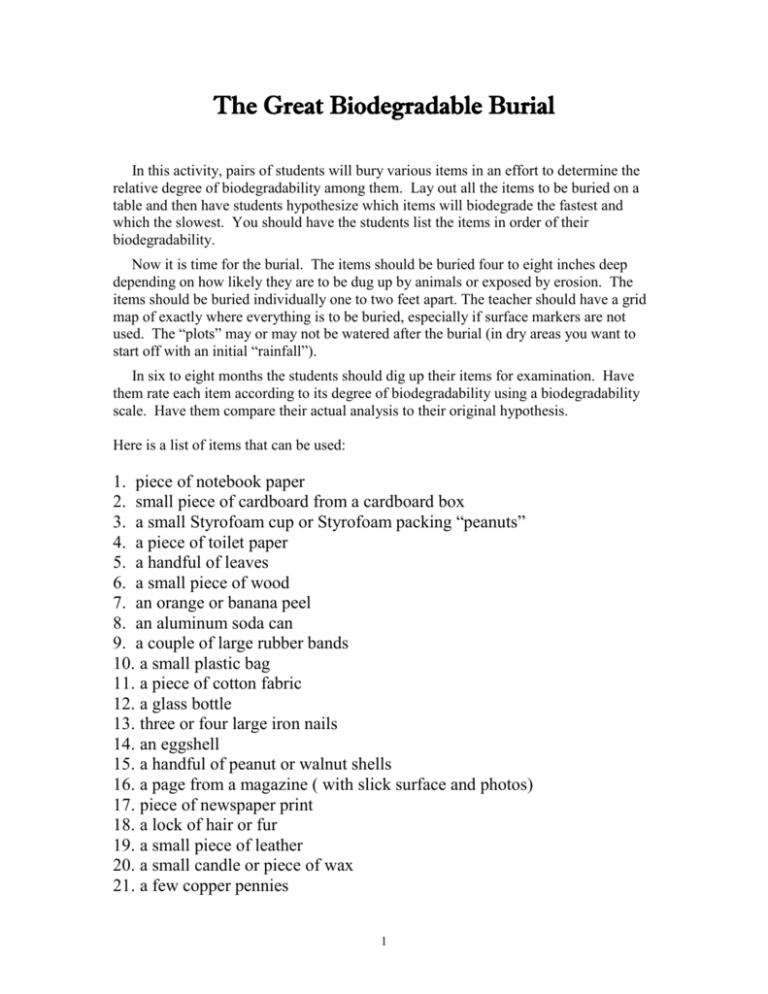
The Great Biodegradable Burial In this activity, pairs of students will bury various items in an effort to determine the relative degree of biodegradability among them. Lay out all the items to be buried on a table and then have students hypothesize which items will biodegrade the fastest and which the slowest. You should have the students list the items in order of their biodegradability. Now it is time for the burial. The items should be buried four to eight inches deep depending on how likely they are to be dug up by animals or exposed by erosion. The items should be buried individually one to two feet apart. The teacher should have a grid map of exactly where everything is to be buried, especially if surface markers are not used. The “plots” may or may not be watered after the burial (in dry areas you want to start off with an initial “rainfall”). In six to eight months the students should dig up their items for examination. Have them rate each item according to its degree of biodegradability using a biodegradability scale. Have them compare their actual analysis to their original hypothesis. Here is a list of items that can be used: 1. piece of notebook paper 2. small piece of cardboard from a cardboard box 3. a small Styrofoam cup or Styrofoam packing “peanuts” 4. a piece of toilet paper 5. a handful of leaves 6. a small piece of wood 7. an orange or banana peel 8. an aluminum soda can 9. a couple of large rubber bands 10. a small plastic bag 11. a piece of cotton fabric 12. a glass bottle 13. three or four large iron nails 14. an eggshell 15. a handful of peanut or walnut shells 16. a page from a magazine ( with slick surface and photos) 17. piece of newspaper print 18. a lock of hair or fur 19. a small piece of leather 20. a small candle or piece of wax 21. a few copper pennies 1 22. a piece of bread 23. a piece of synthetic fabric 24. a piece of wool fabric 25. a dead invertebrate 26. a painted wooden block or other painted wood item 27. a handful of starch packing “peanuts” 28. an unwrapped candy bar 29. Code 1 plastic (PETE) polyethylene terephthalate, soft drink bottles, cooking oil bottles 30. Code 2 plastic (HDPE) high density polyethylene, milk and water jugs, grocery bags, toys, liquid detergent bottles 31. Code 3 plastic (PVC) polyvinyl chloride, flooring, shower curtains, house siding, and plumbing pipes 32. Code 4 plastic (LDPE) low density polyethylene, bread bags, frozen food bags, cellophane wrap and grocery bags 33. Code 5 plastic (PP) polypropylene, ketchup bottles, yogurt containers, margarine tubs, medicine bottles and long underwear. 34. Code 6 plastic (PS) polystyrene, videocassette cases, compact disc jackets, foam coffee cups, knives, forks and spoons, grocery store meat trays, fast food sandwich containers 2


